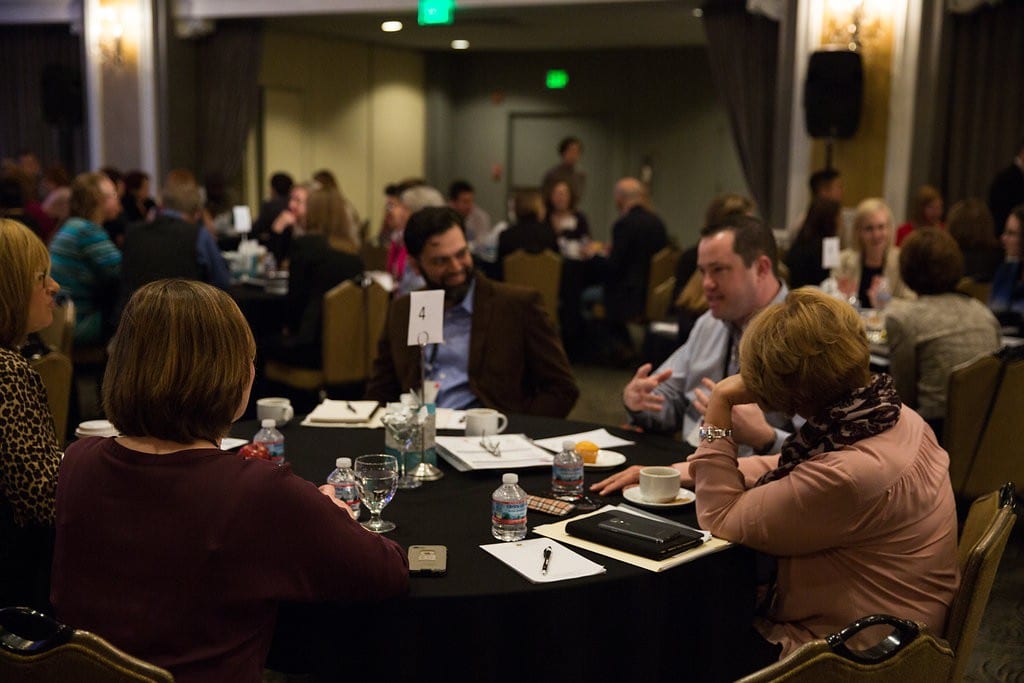
In this episode of the podcast we continue our informal “After Action Review” of the Leading Learning Symposium. The review provides a way for us to reflect on what worked and what didn’t, with an eye toward improving the next time around. It also provides what we hope will be a helpful view into our thinking and process, possibly providing ideas and insights that others can apply in their events.
To tune in, just click below. To make sure you catch all of the future episodes, be sure to subscribe by RSS or on iTunes. And, if you like the podcast, be sure to give it a tweet!
Listen to the Show
Related Resources
- Part I of the After Action Review
- Schedule for the Leading Learning Symposium
- Celisa discusses the design of the Symposium program
- Sue Pelletier writes about the unique design of the Symposium
- Check out Symposium photos on Facebook (more to come)
Read the Show Notes
[00:18] – Introduction to Part 2 of the After Action Review (AAR) of the Leading Learning Symposium. In case you missed it, Part 1 can be found at: https://www.leadinglearning.com/episode13. Jeff recommends looking at a copy of the program again as you listen.
[1:21] – Celisa and Jeff review what was covered in Part 1 of the AAR (pre-event content, priming activity, community assembly, content pods, and role of vendors/faculty) and give a preview of what will be covered in Part 2 (application labs, synthesis sessions, outside speaker Rohit Bhargava, curated connections, and breaks/meals).
[02:14] – A review of the questions that will be addressed (more or less) in the AAR:
- What did we set out to do?
- What actually happened?
- Why is there a difference between the first two (if there is one)?
- What should we continue going forward and what should we change?
[02:59]- Jeff and Celisa talk about the three application labs and share their thinking behind the way they were organized.
[05:35] – A further discussion about the organization of participants into cohorts for the application labs, the thought that went into forming them, and a reflection about their effectiveness.
[07:31] – Celisa and Jeff talk about the value of the synthesis sessions as a chance to provide time for attendees to reflect and connect the dots from everything shared throughout the day. They also mention the importance of asking the right questions during reflection and how this can be improved going forward.
[10:51] – A conversation about outside speaker, Rohit Bhargava and the reasoning behind choosing him as the keynote as well as why he spoke on Day 2 of the symposium.
[14:02] – Jeff and Celisa weigh in on the curated connections session that occurred on Day 2. They share how they came up with the topics and their overall satisfaction with the discussions.
[17:06] – A reflection about the use of breaks to intentionally allow for white space in the program with the hopes of giving attendees time to take care of their needs and/or just think. Jeff and Celisa also talk about lunch (including timing and the decision to provide food in-house) as well as share their thoughts regarding longer breaks.
[20:47] – A discussion about the need to communicate sooner and to be more concise when thinking about areas to improve when planning the next symposium.
[22:50] – Celisa and Jeff explain the need to address the scale of the symposium when considering future growth of the symposium.
[24:34] – A reminder that it is important to continue to communicate the symposium as a part of a process of learning and building community, rather than just a one-time event.
[25:38] – A discussion about the importance of examining what to trim back on when considering how to still deliver a high amount of value without being overwhelming.
[27:57] – A dialogue about the number of teams that were represented at the symposium and the potential to design the next symposium to maximize value with both teams and individuals in mind.
[29:28] – Jeff and Celisa finish the AAR by sharing that overall they were very pleased with the outcome of the symposium. They will continue to reflect and look at how they can improve going forward.
[30:45] – Wrap-Up
If you are getting value from the Leading Learning podcast, be sure to subscribe by RSS or on iTunes. We’d also appreciate if you give us a rating on iTunes by going to https://www.leadinglearning.com/itunes
Also, please tell others about the podcast. Go to https://www.leadinglearning.com/share to share information about the podcast via Twitter, or send out a message on another channel of your choosing with a link to https://www.leadinglearning.com/podcast.
[36:51] – Sign off

Leave a Reply